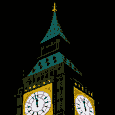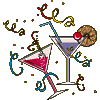

Family Network



|

Family Network



|
|
 Everything Redhead 
New Year Traditions The Scottish New Year is known as Hogmanay and both New Year's Eve and New Year's Day were also known as Daft Days. The first Monday in January is a holiday and is referred to as Handsel Monday. In Scotland New Year's Eve is called Hogomanay or Night of the Candle. Foods such as three cornered biscuits called Hogmanays are eaten. Other foods that are special at this time of year are wine, cordials, cheese, bread, shortbread, oatcake, currant loaf and scones. After sunset people are known to collect juniper and water to purify the home. The Scots prepare for the New Year by cleaning their houses. This was believed to have been a purification ritual. They would perform a ritual of burning juniper branches which they carried throughout the house so as to remove any lurking germs and diseases. The food they would eat at New Year was Haggis, shortbread, scones, oatmeal cakes, cheese, whisky and wine as well as traditional New Year black buns. The first person to rise in the morning used to take Het Pint spiced ale to those members who were still in bed. In Scotland an old tradition that still is relevant today is that of the first footer which is said, that whoever the first person to set foot into your home on New Year's day decided the family's luck for the rest of the year. This was based on the belief in the magic power of beginnings. The start of the New Year controlled its future course. The person most welcome on new year's morning was a tall, dark haired man and especially if he bought a gift as this was considered magical as his handsome features would make the year a pleasant one and his gift of a loaf of bread, or a shovel of coal would ensure that there would be no lack of food or warmth in the household. Any other type of person who was to set foot in your home on New Year’s morning would spell disaster. Therefore people would subtly arrange for the right person to arrive. They would light bonfires so as to dispose of the old year and sometimes a straw figure known as "the Auld Wife" which represented the old year would be thrown onto the bonfire. One method used in the old days to remove evil spirits was to banish the evil to a cat or dog and scare them away. On New Year's Eve they all link arms in a circle and sing the traditional New Year song Auld Lang Syne. After welcoming the New Year, all the people of the household would wait to see who the first person to enter the house after midnight will be, as this person would indicate whether they would have good luck or bad luck for the coming year. The first person must be a dark haired male, young virile, good natured and prosperous. He should not be empty handed and was supposed to bring with him a small gift such as a piece of coal, bread, salt as they were symbols of life. On New Year's Day children from Scotland rise early to make the rounds to their neighbors singing songs. They are given coins, mince pies, apples and other sweets for singing. This must be done by noon or the singer will be called fools. In some Scottish villages barrels of tar are set on fire and rolled through the streets. This is done to burn up the old year and to allow the New Year in.
  Mens.Net | Womens.Net | Mothers.Net | Fathers.Net | Grandparents.Net | Teenagers.Net | Santas.Net | EasterBunnys.Net | JackOLanterns.Net | FatherTimes.Net | StValentines.Net HarvestFestivals.Net | BirthdayCelebrations.Net | ToothFairys.Net
 Please read our Legal Statement and Privacy Policy.
|